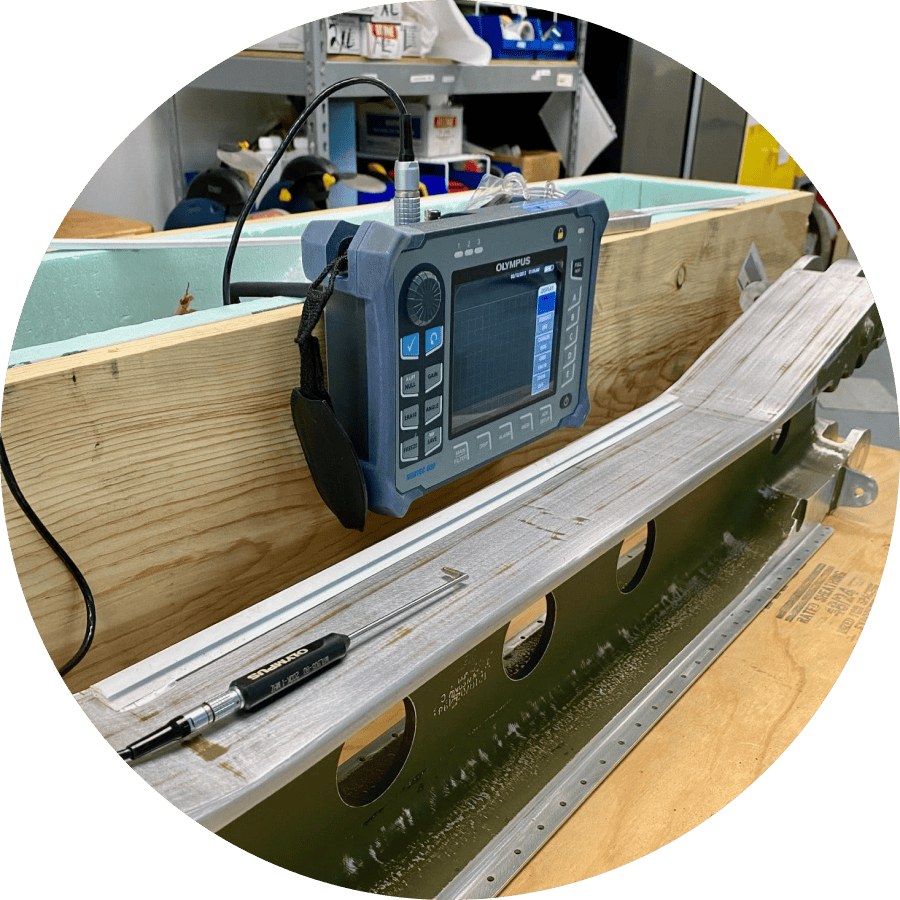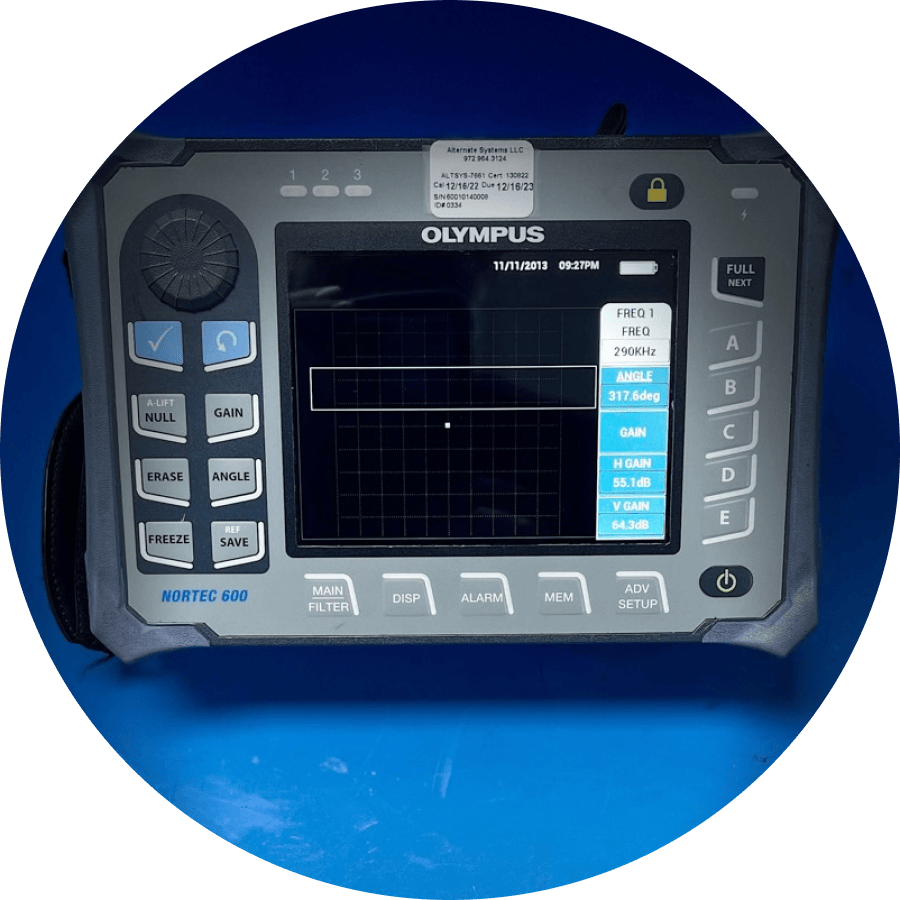Eddy Current Training (ET)
Master eddy current inspection with our comprehensive training program

Understanding the science behind eddy current testing
Learn the ins and outs of eddy current testing
The core principle of eddy current inspection revolves around the generation of electromagnetic fields. An inductor is used to create a magnetic field around the test piece. This initial field, when introduced to the surface of the conductive material, induces the formation of eddy currents within the material itself. These eddy currents, in turn, generate their own opposing magnetic field. Any disruption or discontinuity in the material, such as a crack or imperfection, will interfere with the flow of these eddy currents.
This disruption can be detected by measuring the resulting change in impedance (resistance) of the inductor coil. By analyzing these impedance changes, ET inspectors can pinpoint the location and nature of flaws within the material.

Advantages and limitations of eddy current testing
ET is a highly versatile NDT method valued for its ability to detect surface and near-surface defects in conductive materials. However, its capabilities extend far beyond basic flaw detection. Here are the key advantages and limitations of ET.
Advantages
Superior flaw detection:
Eddy current inspection excels at identifying cracks, corrosion, and other imperfections on or near the surface of conductive materials such as metals. This makes it ideal for inspecting pipes, tubing, and various metal components. Advanced ET probes can even detect subsurface flaws, expanding its application range.
Minimal surface preparation:
Unlike some NDT methods, ET doesn't require extensive surface preparation before inspection. This saves time and resources during the testing process.
Penetrating coatings:
ET shines in its ability to detect flaws hidden beneath nonconductive coatings such as paint or varnish. This eliminates the need to remove the coating beforehand, preserving the integrity of the test piece.
Multitasking capabilities:
Beyond traditional flaw detection, eddy current inspection can also be used to measure the thickness and hardness of certain materials. This versatility makes it a valuable tool for various quality control applications.
Complex geometry inspection:
Eddy current technology can effectively navigate complex shapes and geometries, making it suitable for inspecting components with intricate features.
Simplified setup:
Eddy current equipment is generally portable and doesn't require messy couplant liquids or gels for operation. This simplifies the testing process and enhances its flexibility.
Limitations
Conductivity dependence:
Since eddy currents rely on conductivity, ET is limited to testing conductive materials such as metals. Nonconductive materials like plastics or wood cannot be inspected using this method.
Material thickness:
The effectiveness of eddy current inspection can be impacted by the thickness of the material being tested. Thicker materials might require specialized probes with deeper penetration capabilities.
Flaw orientation:
Eddy currents are most effective at detecting flaws that are oriented perpendicular to the probe's path. Flaws running parallel to the surface might be more challenging to identify.
User expertise:
Like most NDT techniques, ET relies on the skill and experience of the operator. Proper training is crucial for accurate analysis and optimal equipment utilization.
Real-world applications of eddy current testing
Eddy current inspection’s early detection capability translates to significant benefits, preventing minor issues from escalating into costly problems. Let's explore some key applications of ET:
Ensuring safety in aerospace
The aerospace industry relies heavily on ET to maintain the structural integrity of aircraft. Eddy current inspections are routinely used to detect cracks and imperfections in critical components, such as:
- Landing gear components
- Engine parts
- Wing structures
- Fuselage components
Maintaining peak performance in automotive production
The automotive industry utilizes ET throughout the manufacturing process to guarantee the quality and performance of vehicles. Some common applications include:
- Detecting cracks in engine blocks and other critical components
- Verifying the integrity of welds
- Measuring the thickness of coatings
- Identifying material variations that could affect performance
Optimizing efficiency in oil and gas pipelines
The oil and gas industry relies on a vast network of pipelines to transport resources. ET plays a vital role in ensuring the safety and integrity of these pipelines. These inspections are used for:
- Detecting corrosion on the inner and outer surfaces of pipes
- Identifying cracks and other defects in welds
- Monitoring the thickness of pipelines over time
Other Services
Explore our comprehensive suite of NDT training services
We offer a complete suite of services for program establishment, audits, and examinations.
